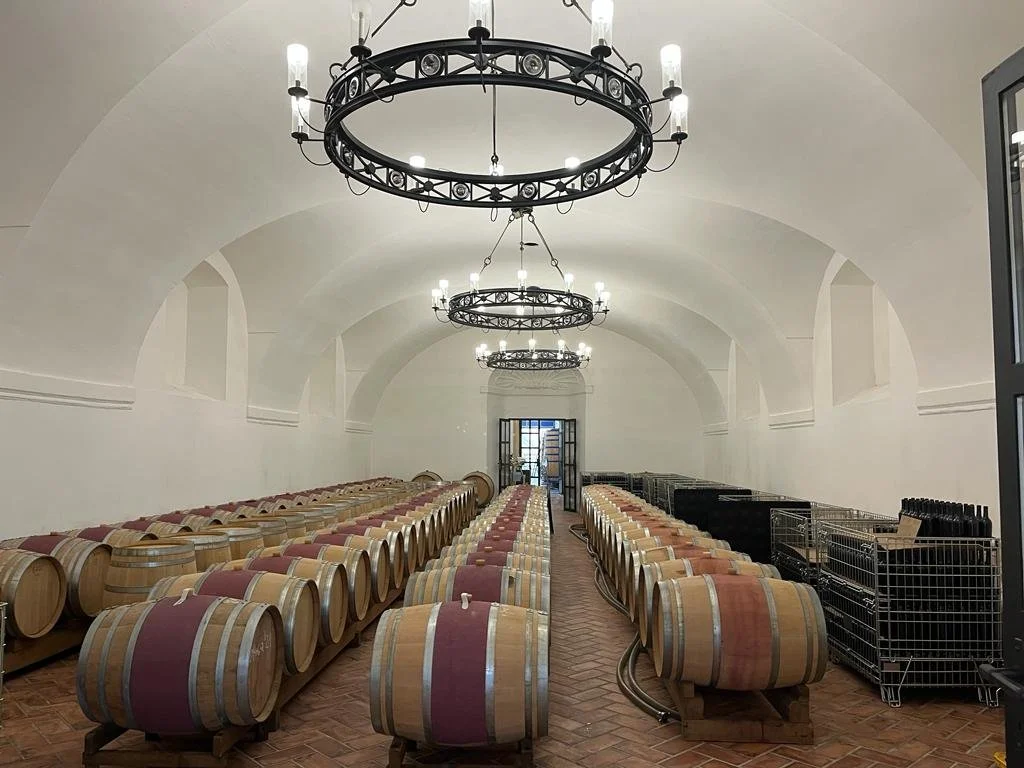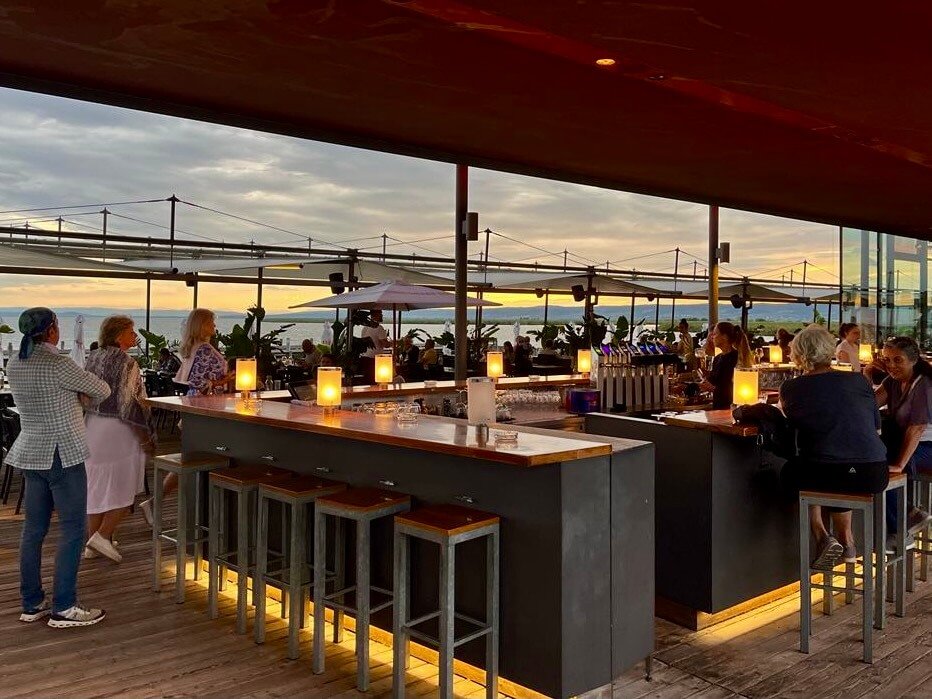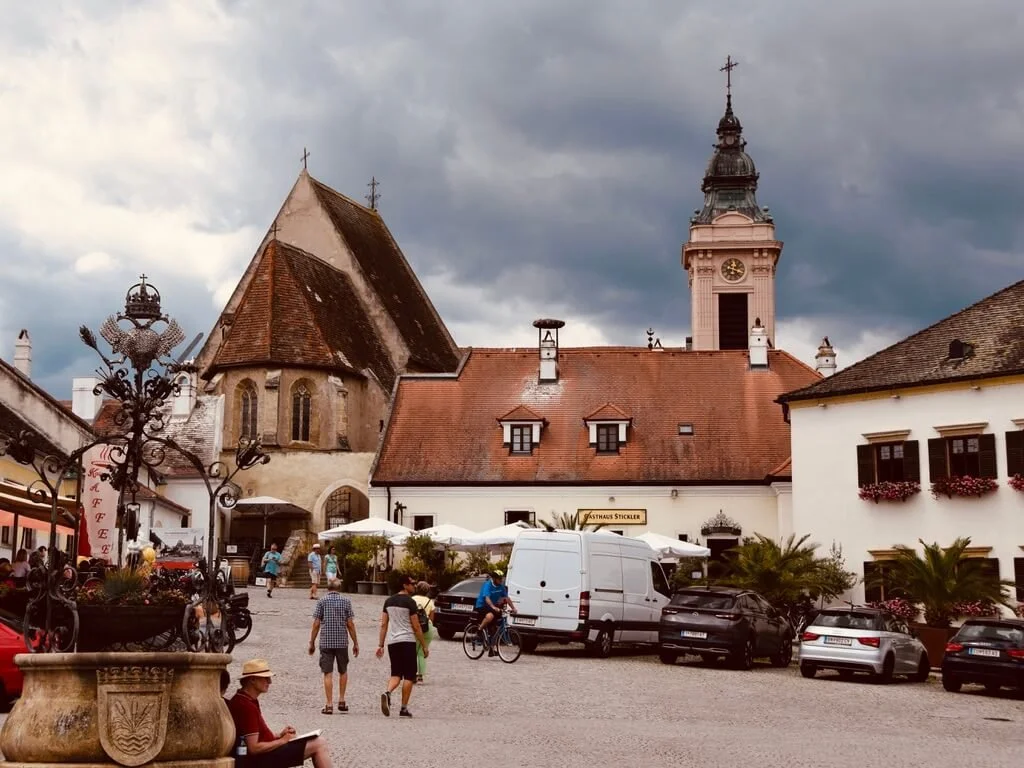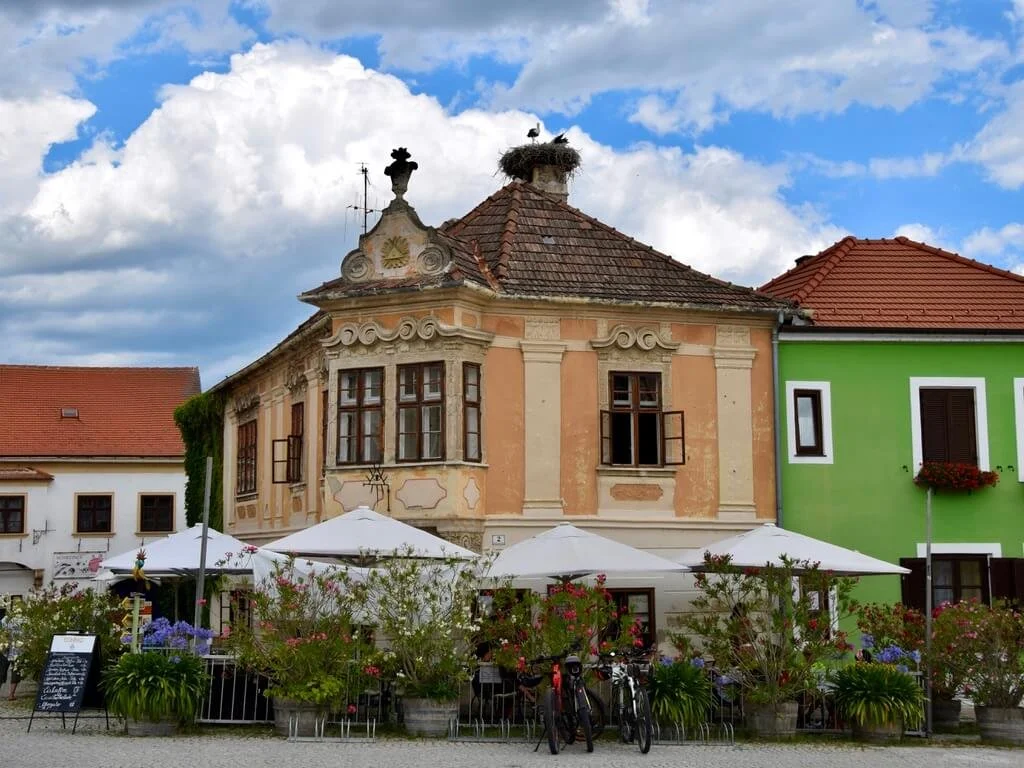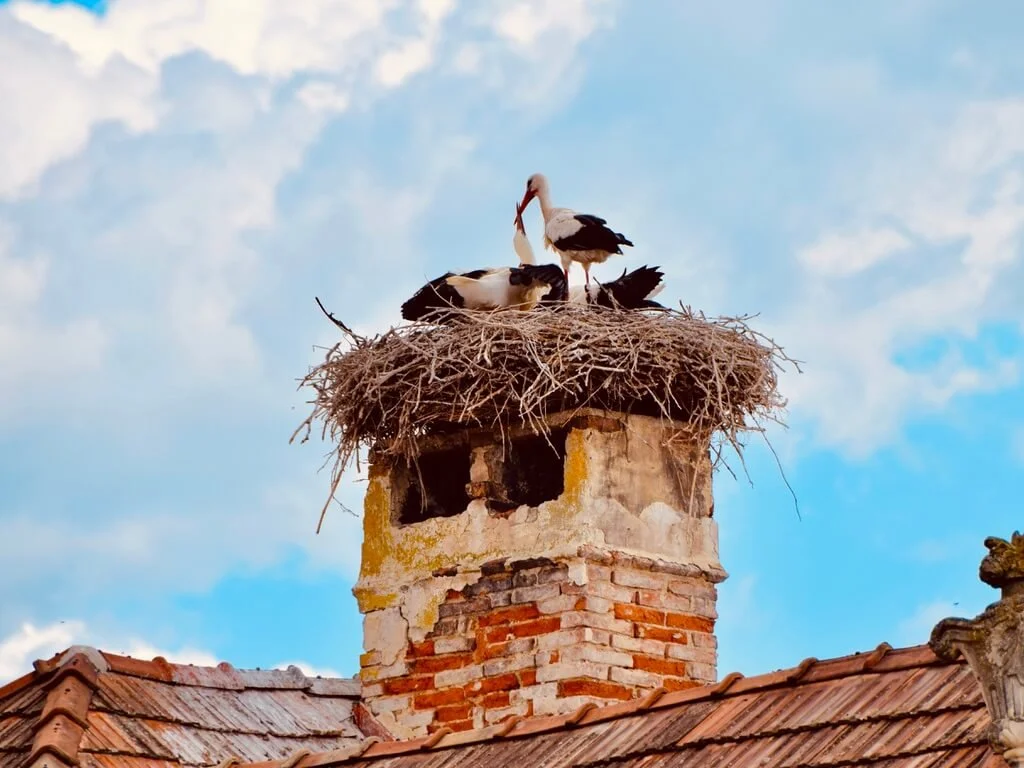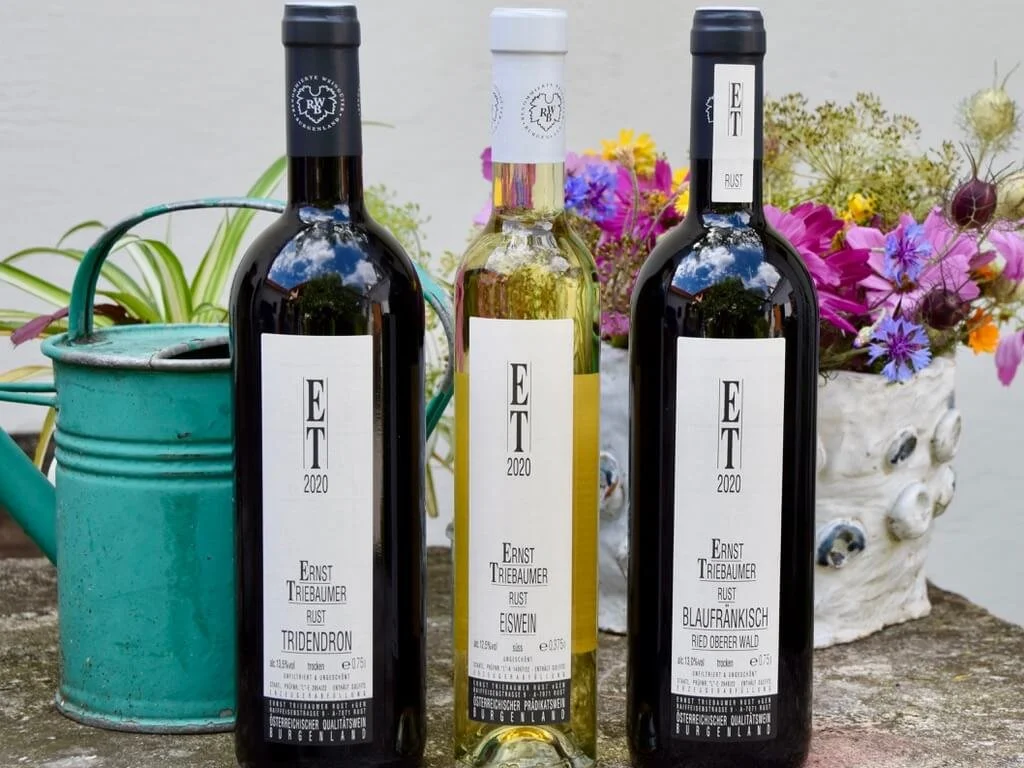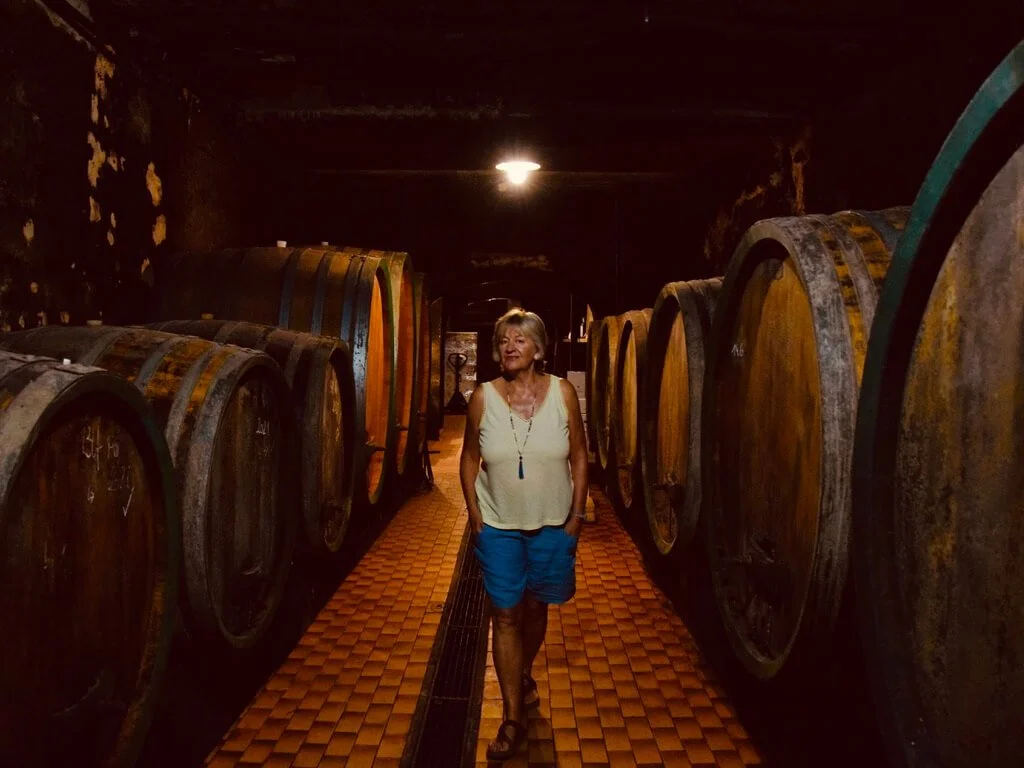Discover Lake Neusiedl in Burgenland Austria
In our view, one of the best places to visit in Austria and home to amazing Neusiedlersee wine - read about our cycling holiday in Austria and how we discovered this beautiful Austrian wine region!
Cycling round Lake Neusiedl - at ‘More West’, Neusiedl am See
Austria’s Burgenland wine region is a fabulous wine tourism destination, not perhaps known or obvious to many, but trust us it really is! Not only does it have lots of castles, palaces, museums and beautiful natural landscapes to discover, it is home to the amazing UNESCO World Heritage site, Lake Neusiedl - or Neusiedlersee - a very popular holiday destination for Austrians and those living in the capital city, Vienna.
We were keen to discover the phenomenon that is Lake Neusiedl and to discover Neusiedlersee wines, so we organised a wine tour there - basing ourselves in the wine town of Gols and we took our bikes with us so we could see the best of Lake Neusiedl - by bike!
Read on to find out all about it and to hopefully inspire you to visit yourself one day!
Watch the video here:
Read all about our experience exploring the beautiful Lake Neusiedl below and if your’e inspired to see if it for yourself, then perhaps contact us and let us help you plan your own wine travel there!
About Lake Neusiedl
Lake Neusiedl - or ‘Neusiedler See’ in German - is the largest ‘Pannonian Steppe lake’ in Central Europe and the largest lake in Austria. It is extraordinarily shallow, with an average depth of just 1 metre and it extends some 36 km across the border into neighbouring Hungary.
Lake Neusiedl is named after the Austrian town of Neusiedl and the Hungarian word for “swamp lake.” It is fed by rain as well as a small stream and probably underground sources, but it has no natural outflow - as such it is categorised as an ‘Endorheic lake.’
What is the Pannonian Steppe?
The ‘Pannonian Steppe’ is basically an expanse of grasslands which stretch across Burgundy in Austria and parts of Hungary, Bulgaria, Romania, Serbia and Slovakia, characterised by treeless plains, marshland and low, wet forests. This incredible landscape is also home to many species of rare and migratory birds and is a paradise for unique fauna and flora, making it a huge attraction for nature lovers.
A paradise for nature, sport, culture and gastronomy
Lake Neusiedl’s importance as a wetland habitat for migratory birds earned Lake Neusiedl a place on the UNESCO World Heritage list as a protected cultural landscape and its heavy reed growth along the lake’s shores supports significant wildlife.
In addition to nature lovers, Lake Neusiedl attracts sports enthusiasts - especially cycling and water sports and in the winter, when the lake freezes over, lovers of ice skating - as well as culture fans, with its significant musical events, art galleries and museums!
The endless vineyards all around the lake and superb gastronomy here, along with the wonderful hospitality, idyllic villages and wealth of excellent restaurants and local taverns - or ‘heurige’ -make Lake Neusiedl an incredible wine tourism destination!
The key towns and villages around Lake Neusiedl
Neusiedl am See is the main town and gateway for Lake Neusiedl and is located at its northernmost end. To the east and a little bit inland is the wine town of Gols and further south around the lake, the villages of Podersdorf am See and then Illmitz - in the Seewinkel National Park and home to the region’s famous sweet wines.
Going west from Neusiedl am See, there is the well-known wine centre of Rust and just below that the village of Mörbisch am See, just north of the border with Hungary.
Neusiedlerseee wine
Lake Neusiedl vineyards - Source: Winekeller
The vineyards around Lake Neusiedl form 2 Burgenland wine regions:
The Neusiedlersee sub-region is on the northern and eastern sides of Lake Neusiedl. The best Neusiedlersee red wines come from this area, slightly away from the lake - around the wine towns of Gols (see later). Additionally, the grassy reeds around the lake here and the damp, misty autumn weather provide a superb terroir for botrytis (noble rot) grapes, which produce delicious, world-class sweet wines (especially in the Seewinkel region around the wine village of Illmitz, to the south which has a unique microclimate). The main grape varieties used for Neusiedlersee wines are Welschriesling & Chardonnay for white wines and Zweigelt, Blaufränkisch and St. Laurent for the reds.
The Leithaberg sub-region, one of the oldest wine regions in the world, lies on the western shores of the lake, where the vineyards are protected by a line of small hills - the region is called Neusiedlersee-Hügelland. This area produces some excellent, distinctive red and white wines. On this side of the lake is the beautiful lakeside town of Rust, seen as the most charming of the Burgenland towns and the key regional wine town (see later). Rust is known for its superb red wines as well as the most historically famous Burgenland wine, a fabulous sweet wine known as ‘Ruster Ausbruch’. The principal grape varieties on the western side of Lake Neusiedl are Blaufränkisch, St. Laurent, Pinot blanc, Chardonnay and very specific to Rust, a grape called Furmint.
Our bike and wine tour of Lake Neusiedl
Lake Neusiedl is a top destination for combining wine & cycling! We embarked on a one day ebike tour around the lake, which gave us a wonderful insight into the whole region - then we took 2 days to discover places in more detail. You could easily do a multi-day bike tour stopping off along the way in different locations.
We started our bike tour in the wine town of Gols at the north-eastern end of Lake Neusiedl, known for its excellent red wines. We were actually based here, at a small winery and bed and breakfast called Wendelin. Located in the main square (Hauptplatz), it was a perfect location for us. We could easily store our bikes here and the hospitality couldn’t have been more relaxed or comfortable.
The wine town of Gols
Gols is a small town, the centre being the Hauptplatz, where there is an excellent vinothek, called Wein Kulturhaus - a great place to browse and sample the region’s wines! You need to allow some time though - as they stock 400 wines from almost 100 winemakers here!
Gols is the largest wine-growing community in Austria - in fact few villages in Austria are more singularly devoted to viticulture nor so crowded with family wineries than here.
Gols wineries
A great way to discover the wines and wineries of Gols is to follow the Gols ‘Weinweg’. Perhaps sample some wines then pay a visit to your favoured wineries in and around Gols - here are some of ours:
Weingut Georg Preisinger - we used to import these excellent wines - Georg Preisinger and his wife follow organic practices and produce some stunning wines - excellent to visit for wine tastings
Weingut Paul Achs - a leading producer for many years, certified biodynamic
Weingut Juris - we also used to import Juris wines - leading producer known for red wine cuveés
Weingut Markus Iro - up and coming producer - excellent quality, value for money wines
Weingut Gernot & Heike Heinrich - leading producer, biodynamic
Where to eat in Gols
Whilst in Gols we enjoyed an excellent dinner in Gols at ‘Heimlich’, with some fabulous local wines and traditional food, served tapas style so we could share and sample more dishes - all delicious!
Close to Gols we can also highly recommend Gasthaus Dankbarkeit in Podersdorf am See, where we enjoyed a wonderful meal and wines in their lovely garden. They also have a Buschenschank - or a small local tavern linked to their winery - where they offer wonderful plates of cold, local, traditional foods - and of course wines.
Nearby attractions
Whilst in Gols we paid a visit to the nearby, beautiful Schloss Halbturn - described as a cultural treasure and one of the most valuable historical sights in Austria. It once served as a hunting and summer residence for the imperial family and you can visit the castle today as well as the magnificent castle park. There are always exhibitions on here and we can also recommend the café here - either for a snack or a typically austria cake and coffee! If you fancy a glass of wine, perhaps try the castle’s own wines or visit the Schloss Halbturn winery.
Cycling from Gols to Rust
The first section of our day cycling tour took us from Gols, heading east via the Lake Neusiedl cycle path (there are multiple themed, signed Neusiedlersee bike routes), through Neusiedl am See and down to the popular wine town of Rust.
Our route took us through some absolutely stunning landscapes, through vineyards, fields of sunflowers and pretty villages such as Winden am See, Purbach am See, Donnerskirchen and Oggau am See. The lake is never far from you, but you can rarely make it out due to how flat the terrain is - which makes it very suitable for all of the family to cycle - and all levels! As we headed south around the lake the gentle rolling Leithagebirge hills are always present to the right, which help to make the red wines from here so distinctive.
On the Lake Neusiedl cycle path heading to Rust - Source: Winekeller
Stops on our route:
We enjoyed a coffee stop at the beautiful Mole West restaurant in Neusiedl am See - the setting here is just incredible on the lake shore, with beautiful views (and sunsets) which we enjoyed again the following day when we returned for dinner. This is a really special spot.
We then stopped for a well-earned rest and lunch at Restaurant Fossil in Purbach am See, which is located in the famous ‘Kellerplatz’, essentially an alley of old limestone wine cellars, built at the foot of the Leithagebirge hills, dating back to 1850. This is a unique place and if you don’t visit here to have a meal like we did, you should still visit it to wander down the alley and perhaps taste some wines! There is an excellent vinothek here, called ‘Haus am Kellerplatz’ where you can try lots of different local wines and there are some excellent wineries in Purbach too, one of particular note being Weingut Brigit Braunstein.
We can highly recommend the Fossil restaurant - the food was excellent and you can choose to either sit in the cellar dining area or outside in the ‘Mediterranean terrace’ - it was perfect!
The only challenge was however, that we weren’t even half way through our bike tour around the lake and our legs felt rather tired after lunch!
Visiting the wine town of Rust
Rust is best known for its nesting storks and as a wine-growing community and it’s also the most picturesque and historic spot to visit around Lake Neusiedl. Relatively undiscovered by international tourists it really is a gem and we urge you to visit!
Rust has just 2,000 inhabitants yet it has a rich history in wine, spanning back to the Middle Ages when the winegrowers of Rust benefited from a wide trading network that stretched to Bavaria and as far as Poland.
Rust is known as the ‘Royal Free City of Rust’, in recognition of the fact that in 1681, its citizens bought the title of “Royal Free City” from Emperor Leopold I for the price of 60,000 guilders and 500 Eimer (about 30,000 litres) of its famous Ausbruch wine (see below).
The town square at the heart of the historic city centre is teeming with great coffee shops, wine bars and restaurants, along with some lovely shops and historic sights such as the ‘Fischerkirche’, the oldest preserved church in Burgenland with original frescoes dating from the 13th century. The square provided us with a great opportunity for a break where we enjoyed a glass of wine and watched the storks which nest on all of the building roofs around the square - it really is a sight!
See here for ideas of what to see and do in Rust.
Rust wines
Rust is the home of regionally typical, mineral-driven red and white Leithaberg DAC wines, but is known for its legendary famous Burgenland sweet wine, known as ‘Ruster Ausbruch’, which has been protected by DAC regulation since the 2020 vintage.
Ruster Ausbruch wines qualify as the highest level of sweet wines, ‘trockenbeerenauslese’ and are made according to centuries of tradition, with grapes grown exclusively in the Free City of Rust, which have been affected by the Botrytis fungus and have shrivelled on the vine.
The name “Ausbruch” comes from the hand-selection of suitable berries, in which the desired berries are literally “broken off” the cluster.
A visit to Weingut Ernst Triebaumer
Weingut Ernst Triebaumer is a 4th generation family winery. They farm 18 hectares of vineyards all around the wine town of Rust and produce 80-100,000 bottles per year. They are known for their excellent wines and the fact they follow biodynamic practices, using no chemicals, no irrigation, no artificial fertilisers and no herbicides.
Ernst Triebaumer is located in the centre of Rust and you can visit the 100 year old cellars here as well as enjoy a wine tasting. You can also book a vineyard tour with the winemaker - tours cost approximately 15 euros.
We enjoyed an excellent wine tasting including a rosé, a Gelber muskateller, an entry-level Blaufränkisch, a Blaufränkisch cuvée, 2 top Blafränkisch wines, an Eiswein and a Ruster Ausbruch wine from 1999. All of the wines were amazing.
Note that another recommended winery to visit in Rust is Weingut Feiler Artiger.
Taking the ferry from Mörbisch am See to Illmitz
After our stop in Rust we continued south to the village of Mörbisch am See where we headed for the bicycle ferry to transport us across the lake to Illmitz. There are 2 such ferries which cross Lake Neusiedl on a regular basis - the other runs between Rust and Podersdorf.
The ferry journey was really relaxing and a welcome relief from cycling! The scenery was beautiful.
At Illmitz we headed north, through beautiful countryside and vineyards, through Podersdorf and then inland and back up to Gols.
Illmitz - Seewinkel wines
The Seewinkel region at the south-eastern end of Lake Neusiedl is the most southerly part of the Neusiedlersee winegrowing region and the village of Illmitz is at its core. This is also the centre for Burgenland’s wonderful sweet wines, made from grapes which thrive in the unique microclimate here. The presence of lots of small lakes and ponds here and the damp, autumn mists make this superb terroir for botrytis (noble rot) grapes which produce premium Beerenauslese and Trockenbeerenauslese wines.
Top wineries include Weingut Kracher (which also offers excellent accommodation) and Weingut Tschida.
Seewinekel’s incredible microclimate and landscapes can be enjoyed by spending time in the Seewinkel National Park, home to many unique habitats and a nature-lover’s paradise.
Seewinkel National Park - Source: Winekeller
In all we cycled over 80kms in the one day - admittedly with an ebike and mostly flat, easy terrain it wasn’t too arduous. Cycling around the lake we got to enjoy and appreciate the natural, unspoiled beauty of this region - it was an exceptional experience, with stunning scenery - a day we won’t ever forget.
Useful information for planning a visit to Burgenland’s Lake Neusiedl:
Getting to Lake Neusiedl:
Neusiedl am See is situated just off the A4 motorway, roughly 1-hour’s drive from Vienna. Getting there by train is just as easy, with frequent direct services to the Neusiedl am See train station.
Cycling at Lake Neusiedl
See here for all the information you need to plan your bike tour at Lake Neusiedl.
Bicycles can be rented from rental outlets or “nextbike” stations in most towns around the lake, which are unlocked with a smartphone app.
Much of the accommodation near Lake Neusiedl is found at its southern end near Mörbisch am See, Rust, and Illmitz, rather than Neusiedl am See.
Cultural events Opera and theatre at Lake Neusiedl
Although outdoor activities are the big draw of Lake Neusiedl, there is also much to offer lovers of culture! Particularly popular are the music festivals held around the lake each year, especially the open-air opera in St. Margarethen Quarry - Europe's largest natural stage - and the Seefestspiele Mörbisch festival which hosts musical theatre performances by the water’s edge.
For more information about planning a trip to Lake Neusiedl, visit the official Neusiedlersee website.
Conclusion - our personal highlights
We absolutely loved our time at Lake Neusiedl - it really is a hidden gem. It’s a wonderful wine region to visit but there’s so much else besides wine - the nature is spectacular and it’s totally unspoilt. The best way to discover it is certainly by bike - it was a challenge to go round the whole lake in a day, but a wonderful experience!






















